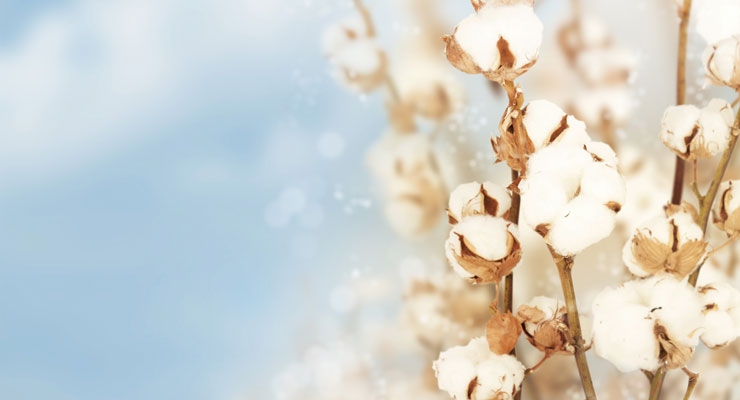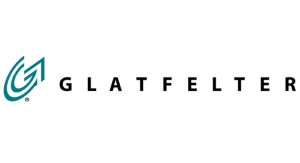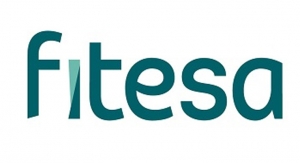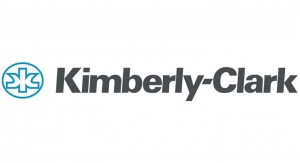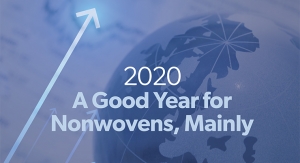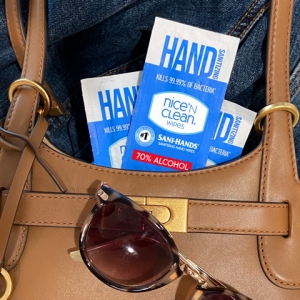Tara Olivo, Associate Editor06.09.16
Manufacturers of end-use products continue to see the value nonwovens bring to the table, which in-turn has been fueling creativity in the fiber industry as producers seek to craft tailor-made solutions for everything including flushable wipes, softer baby diapers, lighter durable fabrics and much more.
According to Smithers Pira, which tracks the paper, packaging and print industry supply chains, the global nonwovens market is expected to grow 6.3% on average year-on-year thanks to global rising demand, reaching $50.8 billion in 2020, up from a value of $37.4 billion in 2015.
As demand for these versatile fabrics reaches new highs, so will the demand for the fibers and resins that make them.
One particular segment within the nonwovens industry that’s expected to see significant growth in the future is hygiene. Increasing disposable incomes in emerging markets will make way for greater demand in feminine hygiene and baby care, while rapidly rising aging populations in some developed countries is predicted to boost sales of adult incontinence products. As such, fiber producers are continuously looking at ways to appeal to this growing market.
Cotton Appeals
While cotton is one of the oldest fibers on Earth—it’s been clothing and feeding people for thousands of years—it is a relative newcomer to the nonwovens industry, according to Cotton Incorporated’s director of Strategic Initiatives Jan O’Regan.
Cotton has played a role in medical nonwoven applications for a long time due to its naturally hypoallergenic and highly absorbent properties, she says, but today the natural fiber is making its way into morehygiene applications such as wipes, diapers, feminine hygiene and adult incontinence products. And, the familiar attributes of cotton as safe, natural and hypoallergenic have made it easy to win over consumers of these products.
Cotton Incorporated’s marketing efforts, along with those of the cotton growers and marketers, have helped increase this interest in the nonwovens industry. “Consumers and industry know cotton from their experiences with T-shirts, jeans, sheets, towels, etc.,” she says. “Investment of resources in an education and promotion campaign to teach people about cotton is not needed. Simply call attention to cotton on the product packaging and consumers are drawn to the product.”
Adding to cotton’s benefits is that it’s the most absorbent fiber—capable of absorbing more than 24 grams of liquid per gram—and it retains liquid better than any other fiber, O’Regan says. “With cotton, the top wipes in a package do not dry out.”
Barnhardt, a producer of purified cotton products for nonwovens, has seen significant demand for cotton in hygiene applications. According to George Hargrove, vice president, Sales & Marketing, Barnhardt, the company’s HyDri cotton is making its way into more topsheets in absorbent hygiene materials such as baby diapers and feminine and adult care products. He attributes its success in this application to the “enhanced breathability of cotton next to the skin and the long history of safety that purified cotton has.”
Acquisition layers in hygiene products are using Barnhardt’s HiLoft cotton, which wicks 33% faster than traditional purified cotton, Hargrove explains, while a newer innovation, HighQ UltraSoft “enhances the natural softness of purified cotton and as an added benefit enhances processing on nonwoven cards.”
Barnhardt is also making its way into the growing flushable wipes market through the introduction of HySperse, an engineered purified cotton fiber for dispersible fabrics made using the airlaid and wetlaid nonwoven processes. Hargrove says that HySperse can also be used in other processes and products where short staple fibers are desired.
Meanwhile, cotton supplier TJ Beall has continued to offer unique fiber products to the nonwovens industry, most recently launching its newest model of TrueCotton unbleached cotton fibers at IDEA 2016. “We have developed processes to overcome the ‘natural’ color of unbleached cotton fibers,” says Lawson Gary, COO of TJ Beall. The new line of natural fibers are white, and they do not conflict with whiteness specifications required by downstream users in personal care.
“We can now offer our TrueCotton fibers in brilliant white color while maintaining our position as the most competitively-priced natural staple fiber available for the nonwovens industry,” Gary says. “Our fibers will now meet any whiteness spec without the need for chemical scouring and bleaching, and this will allow us to continue to offer excellent marketing opportunities through our fiber’s unprecedented sustainability profile.”
Gary adds that its original model of TrueCotton, which has a natural, off-white color, has caused issues for some brand owners requiring white nonwoven material, when blended with white thermoplastics. The new fibers can be blended with thermoplastics or used in 100% TrueCotton substrates with no issues of “yellowing” in the final roll.
Synthetics Spotlight
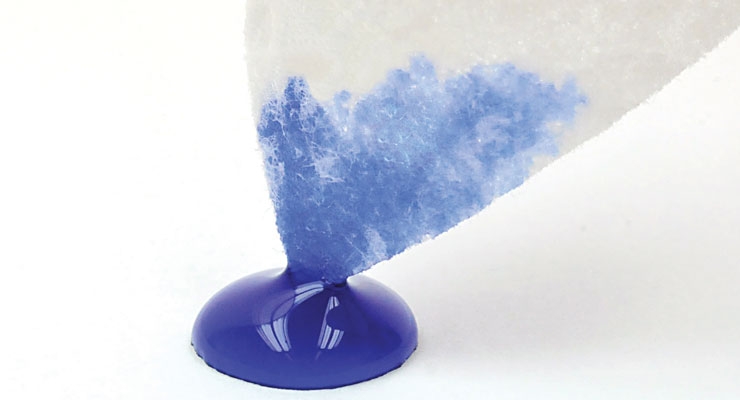
On the synthetics side of the market, DAK Americas supplies polyester staple fibers (PSF) for applications spanning the nonwovens industry including wipes, hygiene, geotextiles and automotive applications.
According to Ricky Lane, corporate communications director, DAK Americas, the versatility and value for the functional attributes PSF brings gives it an edge over other fibers used in nonwovens. “For wipes, PSF is soft, lofty and strong. For diaper markets, DAK PSF brings antimicrobial offerings and brings bulk over natural fibers. For needlepunch, PSF brings bulk and strength,” Lane says.
Currently, DAK is seeing strong growth in the hygiene, personal care and automotives markets, and this market growth has influenced the company to add 230 million pounds per year to its PSF capacity at its Pearl River site in Bay St. Louis, MS. Announced last year, this investment will meet growing demand in the Americas beginning in the first quarter of 2017.
DAK also recently completed a PSF expansion, which was first announced in October 2014, at DAK’s facility near Charleston, SC, adding 27 million pounds per year of capacity. Upon completion of the Pearl River Site expansion, DAK’s total PSF sales capacity in the NAFTA region will be about 700 million lbs/year.
Meanwhile, Trevira, a Hattersheim, Germany-based subsidiary of intermediate petrochemical producer Indorama Ventures, is focused on expanding its range of shortcut fibers. Its most recent products launch, is a new fiber with a particularly soft handle. “The modification in raw material employed can be used for all polymers and is already commercially available for polyester and PLA products,” says Hartmann Huth, head of Trevira’s business unit staple fibers. “It is anticipated that, alongside technical applications, potential for the new development is expected primarily in the field of hygiene.”
Trevira is a specialist in polymer modification, and its range of bicomponent fibers employs a number of raw material combinations including PET/Co-PET, PET/PE and PET/PBT. Huth says the company continues to work on new modifications to meet the needs and technical demands of its customers.
“Man-made fibers like Trevira have the advantage that they can be designed according to their purpose, without the need to apply chemical surface treatments,” he says. “Our fibers are very versatile and suit practically every end use. In close cooperation with our customers, we develop new fiber products to fit their application. A large number of our products are customized fiber types for very specific products and customers.”
While polyester can be used in everything from filtration to food packaging and energy storage systems to cleaning textiles, hygiene remains one of the key end uses for this material. And with living standards in emerging markets continuing to rise, Trevira is seeing growth in this sector.
Another Indorama subsidiary, Auriga Polymers of Spartanburg, SC, is getting ready to start production on an extrusion system that will add 15,000 tons of capacity. With this new expansion, Auriga Polymers will be able to produce fibers based on environmentally friendly polymers such as PLA as well as specialty polyester and post-consumer recycled polymers.
“Indorama Ventures is constantly evolving its technologies to help our customers grow and add valuable products to their portfolio,” comments Tom Brekovsky, vice president Polymers and Fibers, Auriga Polymers Inc. “Auriga Polymers’ focus rests entirely on the nonwovens industry. The added capacity increases Auriga’s position to support our customers who are seeing growing demand for specialty materials in all sectors of the nonwovens marketplace. Through the co-location of specialty PET polymers and staple fiber production at our Auriga Polymers Spartanburg site, we are uniquely positioned to tailor our fiber portfolio to our customers’ requirements.”
Indorama’s Cavan, Ireland-based company Wellman International, a producer of polyester staple fibers, has continued to make advances in the nonwoven hygiene space, supplying fibers for thermobond, resin bond and spunlace technologies used in acquisition and distribution layers, integrated core solutions and other hygiene components in baby care, feminine care and adult incontinence.
In the past year, Wellman has increased its capacity up to 88,000 tons, extending the range of fibers, which it can offer across a broad decitex range from 1.7 decitex up to 44 decitex. The company says this allows it to offer products to market for spunlace and technical nonwoven applications as well as for markets requiring heavier decitex options for excellent resilience.
“We are delighted that our new capability and expanded capacity is helping us develop next generation products to meet the evolving needs of our customers,” says Donal Breen, director of Sales & Marketing, Wellman International.
Meanwhile, Indorama Thailand’s polyester fiber capacity of more than 300 kilotons produced annually in Thailand and Indonesia serve nonwoven markets in hygiene, medical, wipes and more. The company’s offerings include antimony free fiber (antimony less than 2ppm), which are friendly to the skin and the environment; 0.9 denier spunlace fiber for lower basis weight and smooth feel nonwovens; optical bright fibers, which are certified dermatologically safe; coarse denier nonwoven fibers for hygiene and other nonwoven applications; and tailor made 1.2 denier and 1.5 denier nonwoven polyester fiber products for a wide range of nonwoven applications.
In recent years, Indorama has added capacities of 1000 TPD of continuous polymerization of virgin polyester in Indonesia. Additionally, in late 2015, the company started
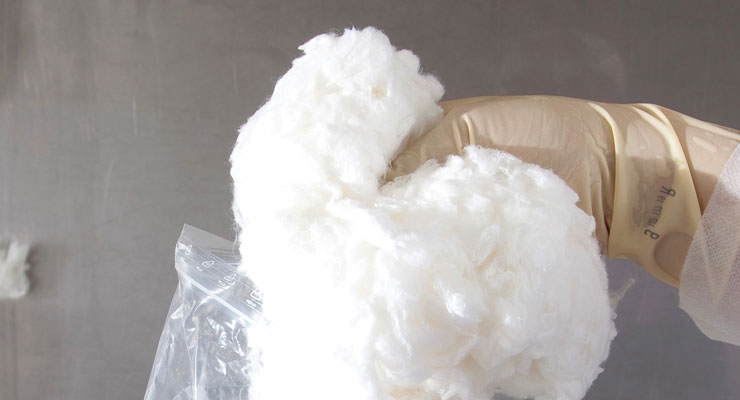
producing 50 TPD of recycled polyester facilities in Thailand in order to meet growing demand and to strengthen its commitment to environmentally friendly products.
Flushin’ Away
Viscose fiber producer Kelheim Fibers of Kelheim, Germany, has been heavily promoting fibers for the manufacture of flushable wipes, a key segment of the wipes market that’s been gaining tons of attention in recent years.
“As a producer of specialty viscose fibers Kelheim Fibres GmbH concentrates on offering new solutions to producers of nonwovens products,” says Matthew North, commercial director, Kelheim Fibres.
Kelheim’s most recent innovation for nonwovens is its Viloft short cut fiber, North says, which was specifically designed to deliver enhanced dispersability in wipes substrates used in the production of flushable wipes. “This builds on our experience with Viloft fibers for spunlacing, which has been available for a number of years,” he says.
The topic of flushable wipes has almost plagued the wipes industry recently due to negative new stories circulating on wipes—not necessarily flushable ones—clogging up pipes and wastewater treatment systems. Thus, fiber producers have been hard at work to create the best solutions for their customers in order for them to exceed guidelines imposed by industry associations INDA and EDANA.
“Demand in this market is growing rapidly as pressure grows for a solution to clogged sewer systems caused by the incorrect disposal of conventional wipe products,” North says.
Responding to this demand for short cut fibers, Kelheim is currently converting one of its production lines to a modern multifunctional line. This €15 million ($16.8 million) investment will increase the company’s short cut capacity and give them more flexibility, according to North.
The new Viloft short cut fibers used in the wetlaid process for flushable wipes do in fact pass the requirements of the current INDA/EDANA Flushability Guidelines, and were chosen as a finalist for the IDEA16 Achievement Awards in the raw materials category.
Viscose producer Birla Cellulose, a subsidiary of Aditya Birla/Grasim Industries, is also perfecting its fibers for use in dispersible applications. According to Rajeev Gopal, senior executive president, global chief sales and marketing officer, Pulp and Fiber Business, Birla Cellulose, the company is currently developing short cut fibers for use in flushable wipes designed to mix with pulp and cationic treated fibers designed to absorb dyes that disperse in the wash cycle. “This specialty treatment uniquely embeds the function within the fiber itself without additional chemicals,” he says.
Birla offers grey fiber deniers 1.5 to 12, which are available in a wide range of colors. In addition to wipes, Birla’s fibers can be found in the automotives, hygiene, medical, food filtration, geotextile and construction markets.
Gopal adds: “We are also supplying fire retardant varieties targeted primarily at the U.S. mattress markets in addition to a growing base of special value added products such as anti-bacterial fibers, anti-mite/anti-bed-bug fibers, and also a special silky soft fiber with high wet strength and absorption qualities especially useful in face masks. We are also working on a new tri-lobal ‘high absorbent’ fiber.”
Today, because of Chinese suppliers, Birla considers the viscose market to be oversupplied. And while there is very high price pressure today, Gopal says demand is growing quickly. “We are also growing fast in textiles, which is 90% of our business,” he says. “We expect the market to move back into balance over the next few years. To meet this opportunity, we are investing in capacity, technology, R&D and people. We expect nonwovens to be a particularly important part of that growth.”
A focus on differentiated products and a true global footprint has helped Indorama Ventures grow into one of the world’s largest fiber suppliers in the world. The Thai-based company’s strategy was built around investing selectively in commodity fiber types and by acquiring innovative smaller companies whose large overheads made it difficult for them to compete effectively. Within the nonwovens segment these brands include FiberVisions, Wellman International, Trevira and Auriga Polymers.
“All of these companies were individually strong and they had huge research and development and innovation capabilities,” says President of the Fibers and Yarns business segment, Mr. Uday Gill. “We acquired them one by one and now we have access to all of this knowledge.”
Post-acquisition, Indorama has chosen to leave these companies be, not changing their management structures or brand names. “You cannot take the culture just because you make the acquisition,” Gill says. “They are very proud of what they do, and we will not take that away.”
Because of this, Indorama will only acquire a company if it has full confidence in the management.
Currently, Indorama’s fiber business comprises about $2.5 billion of its $7.5 billion annual sales. Its fiber capacity is about 1.6 million metric tons, and these fibers are made at five production sites in North America, seven in the Europe and Middle East region and 11 in Asia. From an end use perspective, leading markets include automotive, personal care and hygiene, industrial and home and apparel.
According to Smithers Pira, which tracks the paper, packaging and print industry supply chains, the global nonwovens market is expected to grow 6.3% on average year-on-year thanks to global rising demand, reaching $50.8 billion in 2020, up from a value of $37.4 billion in 2015.
As demand for these versatile fabrics reaches new highs, so will the demand for the fibers and resins that make them.
One particular segment within the nonwovens industry that’s expected to see significant growth in the future is hygiene. Increasing disposable incomes in emerging markets will make way for greater demand in feminine hygiene and baby care, while rapidly rising aging populations in some developed countries is predicted to boost sales of adult incontinence products. As such, fiber producers are continuously looking at ways to appeal to this growing market.
Cotton Appeals
While cotton is one of the oldest fibers on Earth—it’s been clothing and feeding people for thousands of years—it is a relative newcomer to the nonwovens industry, according to Cotton Incorporated’s director of Strategic Initiatives Jan O’Regan.
Cotton has played a role in medical nonwoven applications for a long time due to its naturally hypoallergenic and highly absorbent properties, she says, but today the natural fiber is making its way into morehygiene applications such as wipes, diapers, feminine hygiene and adult incontinence products. And, the familiar attributes of cotton as safe, natural and hypoallergenic have made it easy to win over consumers of these products.
Cotton Incorporated’s marketing efforts, along with those of the cotton growers and marketers, have helped increase this interest in the nonwovens industry. “Consumers and industry know cotton from their experiences with T-shirts, jeans, sheets, towels, etc.,” she says. “Investment of resources in an education and promotion campaign to teach people about cotton is not needed. Simply call attention to cotton on the product packaging and consumers are drawn to the product.”
Adding to cotton’s benefits is that it’s the most absorbent fiber—capable of absorbing more than 24 grams of liquid per gram—and it retains liquid better than any other fiber, O’Regan says. “With cotton, the top wipes in a package do not dry out.”
Barnhardt, a producer of purified cotton products for nonwovens, has seen significant demand for cotton in hygiene applications. According to George Hargrove, vice president, Sales & Marketing, Barnhardt, the company’s HyDri cotton is making its way into more topsheets in absorbent hygiene materials such as baby diapers and feminine and adult care products. He attributes its success in this application to the “enhanced breathability of cotton next to the skin and the long history of safety that purified cotton has.”
Acquisition layers in hygiene products are using Barnhardt’s HiLoft cotton, which wicks 33% faster than traditional purified cotton, Hargrove explains, while a newer innovation, HighQ UltraSoft “enhances the natural softness of purified cotton and as an added benefit enhances processing on nonwoven cards.”
Barnhardt is also making its way into the growing flushable wipes market through the introduction of HySperse, an engineered purified cotton fiber for dispersible fabrics made using the airlaid and wetlaid nonwoven processes. Hargrove says that HySperse can also be used in other processes and products where short staple fibers are desired.
Meanwhile, cotton supplier TJ Beall has continued to offer unique fiber products to the nonwovens industry, most recently launching its newest model of TrueCotton unbleached cotton fibers at IDEA 2016. “We have developed processes to overcome the ‘natural’ color of unbleached cotton fibers,” says Lawson Gary, COO of TJ Beall. The new line of natural fibers are white, and they do not conflict with whiteness specifications required by downstream users in personal care.
“We can now offer our TrueCotton fibers in brilliant white color while maintaining our position as the most competitively-priced natural staple fiber available for the nonwovens industry,” Gary says. “Our fibers will now meet any whiteness spec without the need for chemical scouring and bleaching, and this will allow us to continue to offer excellent marketing opportunities through our fiber’s unprecedented sustainability profile.”
Gary adds that its original model of TrueCotton, which has a natural, off-white color, has caused issues for some brand owners requiring white nonwoven material, when blended with white thermoplastics. The new fibers can be blended with thermoplastics or used in 100% TrueCotton substrates with no issues of “yellowing” in the final roll.
Synthetics Spotlight

According to Ricky Lane, corporate communications director, DAK Americas, the versatility and value for the functional attributes PSF brings gives it an edge over other fibers used in nonwovens. “For wipes, PSF is soft, lofty and strong. For diaper markets, DAK PSF brings antimicrobial offerings and brings bulk over natural fibers. For needlepunch, PSF brings bulk and strength,” Lane says.
Currently, DAK is seeing strong growth in the hygiene, personal care and automotives markets, and this market growth has influenced the company to add 230 million pounds per year to its PSF capacity at its Pearl River site in Bay St. Louis, MS. Announced last year, this investment will meet growing demand in the Americas beginning in the first quarter of 2017.
DAK also recently completed a PSF expansion, which was first announced in October 2014, at DAK’s facility near Charleston, SC, adding 27 million pounds per year of capacity. Upon completion of the Pearl River Site expansion, DAK’s total PSF sales capacity in the NAFTA region will be about 700 million lbs/year.
Meanwhile, Trevira, a Hattersheim, Germany-based subsidiary of intermediate petrochemical producer Indorama Ventures, is focused on expanding its range of shortcut fibers. Its most recent products launch, is a new fiber with a particularly soft handle. “The modification in raw material employed can be used for all polymers and is already commercially available for polyester and PLA products,” says Hartmann Huth, head of Trevira’s business unit staple fibers. “It is anticipated that, alongside technical applications, potential for the new development is expected primarily in the field of hygiene.”
Trevira is a specialist in polymer modification, and its range of bicomponent fibers employs a number of raw material combinations including PET/Co-PET, PET/PE and PET/PBT. Huth says the company continues to work on new modifications to meet the needs and technical demands of its customers.
“Man-made fibers like Trevira have the advantage that they can be designed according to their purpose, without the need to apply chemical surface treatments,” he says. “Our fibers are very versatile and suit practically every end use. In close cooperation with our customers, we develop new fiber products to fit their application. A large number of our products are customized fiber types for very specific products and customers.”
While polyester can be used in everything from filtration to food packaging and energy storage systems to cleaning textiles, hygiene remains one of the key end uses for this material. And with living standards in emerging markets continuing to rise, Trevira is seeing growth in this sector.
Another Indorama subsidiary, Auriga Polymers of Spartanburg, SC, is getting ready to start production on an extrusion system that will add 15,000 tons of capacity. With this new expansion, Auriga Polymers will be able to produce fibers based on environmentally friendly polymers such as PLA as well as specialty polyester and post-consumer recycled polymers.
“Indorama Ventures is constantly evolving its technologies to help our customers grow and add valuable products to their portfolio,” comments Tom Brekovsky, vice president Polymers and Fibers, Auriga Polymers Inc. “Auriga Polymers’ focus rests entirely on the nonwovens industry. The added capacity increases Auriga’s position to support our customers who are seeing growing demand for specialty materials in all sectors of the nonwovens marketplace. Through the co-location of specialty PET polymers and staple fiber production at our Auriga Polymers Spartanburg site, we are uniquely positioned to tailor our fiber portfolio to our customers’ requirements.”
Indorama’s Cavan, Ireland-based company Wellman International, a producer of polyester staple fibers, has continued to make advances in the nonwoven hygiene space, supplying fibers for thermobond, resin bond and spunlace technologies used in acquisition and distribution layers, integrated core solutions and other hygiene components in baby care, feminine care and adult incontinence.
In the past year, Wellman has increased its capacity up to 88,000 tons, extending the range of fibers, which it can offer across a broad decitex range from 1.7 decitex up to 44 decitex. The company says this allows it to offer products to market for spunlace and technical nonwoven applications as well as for markets requiring heavier decitex options for excellent resilience.
“We are delighted that our new capability and expanded capacity is helping us develop next generation products to meet the evolving needs of our customers,” says Donal Breen, director of Sales & Marketing, Wellman International.
Meanwhile, Indorama Thailand’s polyester fiber capacity of more than 300 kilotons produced annually in Thailand and Indonesia serve nonwoven markets in hygiene, medical, wipes and more. The company’s offerings include antimony free fiber (antimony less than 2ppm), which are friendly to the skin and the environment; 0.9 denier spunlace fiber for lower basis weight and smooth feel nonwovens; optical bright fibers, which are certified dermatologically safe; coarse denier nonwoven fibers for hygiene and other nonwoven applications; and tailor made 1.2 denier and 1.5 denier nonwoven polyester fiber products for a wide range of nonwoven applications.
In recent years, Indorama has added capacities of 1000 TPD of continuous polymerization of virgin polyester in Indonesia. Additionally, in late 2015, the company started

Flushin’ Away
Viscose fiber producer Kelheim Fibers of Kelheim, Germany, has been heavily promoting fibers for the manufacture of flushable wipes, a key segment of the wipes market that’s been gaining tons of attention in recent years.
“As a producer of specialty viscose fibers Kelheim Fibres GmbH concentrates on offering new solutions to producers of nonwovens products,” says Matthew North, commercial director, Kelheim Fibres.
Kelheim’s most recent innovation for nonwovens is its Viloft short cut fiber, North says, which was specifically designed to deliver enhanced dispersability in wipes substrates used in the production of flushable wipes. “This builds on our experience with Viloft fibers for spunlacing, which has been available for a number of years,” he says.
The topic of flushable wipes has almost plagued the wipes industry recently due to negative new stories circulating on wipes—not necessarily flushable ones—clogging up pipes and wastewater treatment systems. Thus, fiber producers have been hard at work to create the best solutions for their customers in order for them to exceed guidelines imposed by industry associations INDA and EDANA.
“Demand in this market is growing rapidly as pressure grows for a solution to clogged sewer systems caused by the incorrect disposal of conventional wipe products,” North says.
Responding to this demand for short cut fibers, Kelheim is currently converting one of its production lines to a modern multifunctional line. This €15 million ($16.8 million) investment will increase the company’s short cut capacity and give them more flexibility, according to North.
The new Viloft short cut fibers used in the wetlaid process for flushable wipes do in fact pass the requirements of the current INDA/EDANA Flushability Guidelines, and were chosen as a finalist for the IDEA16 Achievement Awards in the raw materials category.
Viscose producer Birla Cellulose, a subsidiary of Aditya Birla/Grasim Industries, is also perfecting its fibers for use in dispersible applications. According to Rajeev Gopal, senior executive president, global chief sales and marketing officer, Pulp and Fiber Business, Birla Cellulose, the company is currently developing short cut fibers for use in flushable wipes designed to mix with pulp and cationic treated fibers designed to absorb dyes that disperse in the wash cycle. “This specialty treatment uniquely embeds the function within the fiber itself without additional chemicals,” he says.
Birla offers grey fiber deniers 1.5 to 12, which are available in a wide range of colors. In addition to wipes, Birla’s fibers can be found in the automotives, hygiene, medical, food filtration, geotextile and construction markets.
Gopal adds: “We are also supplying fire retardant varieties targeted primarily at the U.S. mattress markets in addition to a growing base of special value added products such as anti-bacterial fibers, anti-mite/anti-bed-bug fibers, and also a special silky soft fiber with high wet strength and absorption qualities especially useful in face masks. We are also working on a new tri-lobal ‘high absorbent’ fiber.”
Today, because of Chinese suppliers, Birla considers the viscose market to be oversupplied. And while there is very high price pressure today, Gopal says demand is growing quickly. “We are also growing fast in textiles, which is 90% of our business,” he says. “We expect the market to move back into balance over the next few years. To meet this opportunity, we are investing in capacity, technology, R&D and people. We expect nonwovens to be a particularly important part of that growth.”
A focus on differentiated products and a true global footprint has helped Indorama Ventures grow into one of the world’s largest fiber suppliers in the world. The Thai-based company’s strategy was built around investing selectively in commodity fiber types and by acquiring innovative smaller companies whose large overheads made it difficult for them to compete effectively. Within the nonwovens segment these brands include FiberVisions, Wellman International, Trevira and Auriga Polymers.
“All of these companies were individually strong and they had huge research and development and innovation capabilities,” says President of the Fibers and Yarns business segment, Mr. Uday Gill. “We acquired them one by one and now we have access to all of this knowledge.”
Post-acquisition, Indorama has chosen to leave these companies be, not changing their management structures or brand names. “You cannot take the culture just because you make the acquisition,” Gill says. “They are very proud of what they do, and we will not take that away.”
Because of this, Indorama will only acquire a company if it has full confidence in the management.
Currently, Indorama’s fiber business comprises about $2.5 billion of its $7.5 billion annual sales. Its fiber capacity is about 1.6 million metric tons, and these fibers are made at five production sites in North America, seven in the Europe and Middle East region and 11 in Asia. From an end use perspective, leading markets include automotive, personal care and hygiene, industrial and home and apparel.

